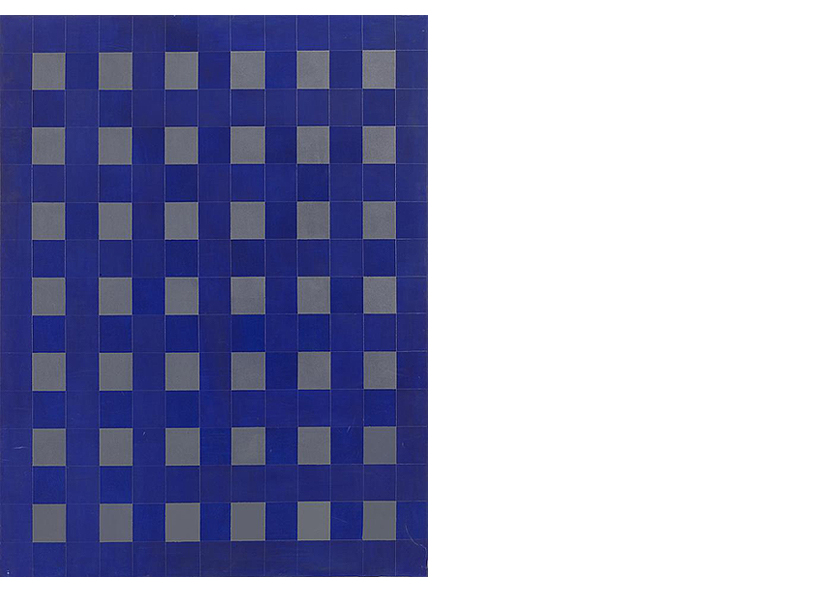
Prominent Spanish geometric abstract painter Gerardo Delgado dies
Tuesday 5 March saw the death at the age of 82 of Gerardo Delgado, a stand-out figure in the history of abstract art in Spain. He trained as an architect, but began a career as an artist in the mid 1960s, staging his first solo exhibition in 1968 at La Pasarela, the gallery which was the heart and soul of modern art in Seville at that time. In the previous year he had participated in the joint exhibition New Generation, organised by the Edurne Gallery in Madrid, and from 1969 to 1971 he took part in the seminars on Automatic Generation of Art Forms organised at the Computing Centre of the Complutense University. In 1972 he also took part in the Encuentros de Pamplona ['Pamplona Gathering'], one of the most important art events of the final years of the Franco regime.
Gerardo Delgado always combined his work as an artist with teaching. Early in his career he produced modular works with flat colours and simple, volumetric, geometric shapes with a great emphasis on experimenting with possible combinations. Later, he focused more on extending pictorial space and colour, generating wraparound installations that evidenced his expanded concept of painting. Frederic Montornés writes that this puts him on the same page as artists such as Frank Stella, Ellsworth Kelly, Lucio Fontana and Piero Manzoni.
With the advent of neo-expressionism in international art in the late 70s and early 80s, his works became more gestural and frequently featured figurative elements diluted against undefined backgrounds. However, from the mid 90s to the end of his career he returned to geometric abstraction, extending his critical examination of space and the limits and nature of pictorial art.
 Gerardo Delgado: Curro Romero (1978)
Gerardo Delgado: Curro Romero (1978)
The Banco de España Collection has four works by Delgado from different periods in his career. The earliest is Curro Romero (1978), where he uses the vibrations and transparencies of different shades of the same colour to create a painting with a presence that is both emphatic and disturbing. The work takes its name from a famous bullfighter, but he uses that name as a reference not to the actual person but to the warm colours associated with such characteristic elements of bullfighting as the clothes, the sandy floor of the bullring, the capes and the burladeros. At around the time when this picture was produced, Javier Maderuelo wrote that Degado always took a metaphorical reference as the basis for his work 'but stripped it of figurative, formal anecdotes, paring it down to highly nuanced colours and precise, strong gestures in paintings that are lyrical, mysterious and attractive'.
 Gerardo Delgado: The Walker - The Visionary (1990)
Gerardo Delgado: The Walker - The Visionary (1990)
Painted 12 years later, The Walker - The Visionary (1990) is a diptych in portrait format that nicely exemplifies the understanding of space in his oeuvre. With extraordinary expressive force, Delgado organically links the two pieces that make up the work, playing with the material nature of the pictorial and highlighting his ability to use colour to construct visual forms of great strength which at the same time are laden with poetic connotations.
 Gerardo Delgado: Route of St Matthew I (2001)
Gerardo Delgado: Route of St Matthew I (2001)
The other two works by Delgado in our collection exemplify his return to pure, geometric, analytic abstraction in the later years of his career. The first is Route of St Matthew I (2001), one of a long series of canvases produced in the 2000s characterised by the use of grid patterns, which he recombines and uses to create geometrical shapes with a profound sense of three-dimensionality.
 Gerardo Delgado: Weave No. 1 (2021)
Gerardo Delgado: Weave No. 1 (2021)
The same striving for three-dimensionality through purely pictorial elements can be seen in Weave No. 1 (2021), one of Delgado's last works, which was acquired by the Banco de España in 2022. It is part of a series of paintings that he began during the Covid lockdown, all of which featured compositions organised into four crisscrossed, inclined elements with sharply contrasting forms and colours. This particular work is inspired by Lunch atop a Skyscraper![]() (1932), the iconic photo of a group of workers sitting on a beam on a skyscraper under construction in New York. It underlines just how creatively lucid Gerardo Delgado remained right up to the end of his life.
(1932), the iconic photo of a group of workers sitting on a beam on a skyscraper under construction in New York. It underlines just how creatively lucid Gerardo Delgado remained right up to the end of his life.
